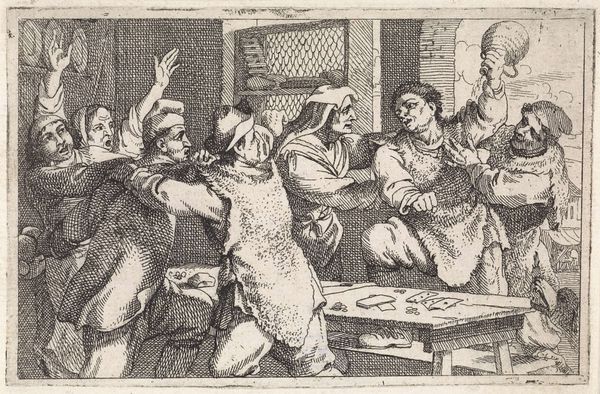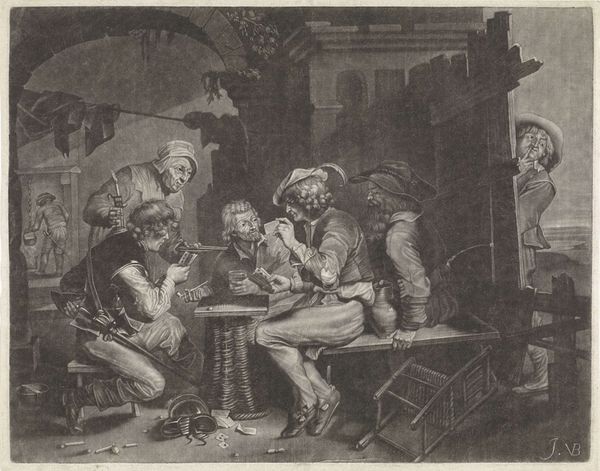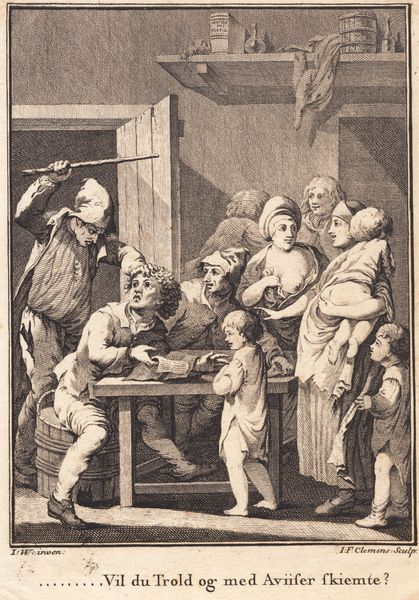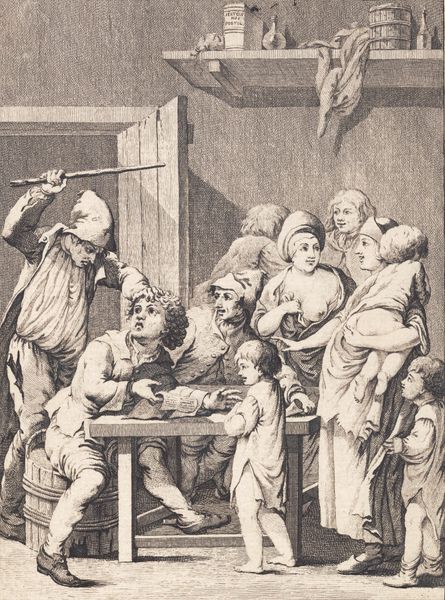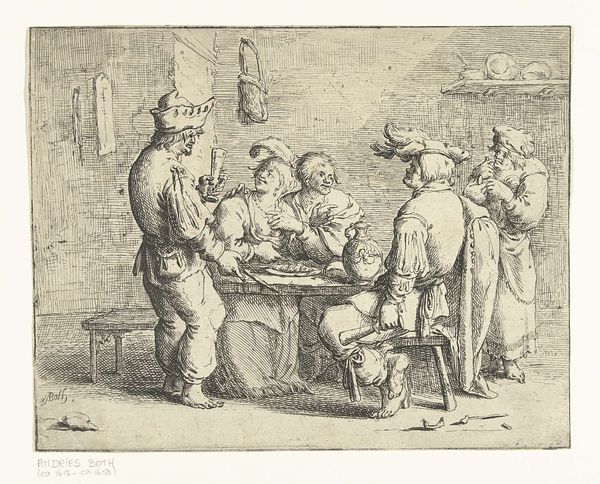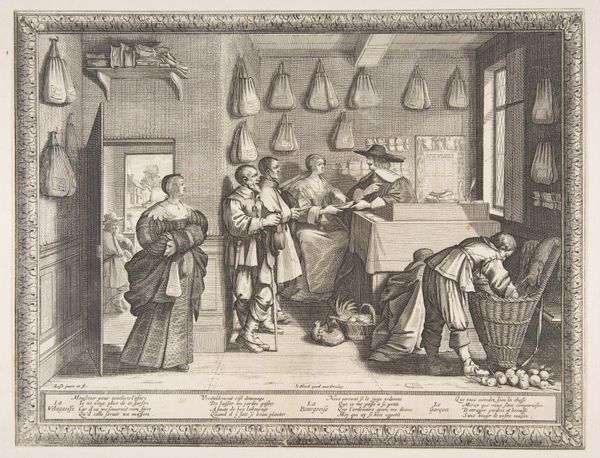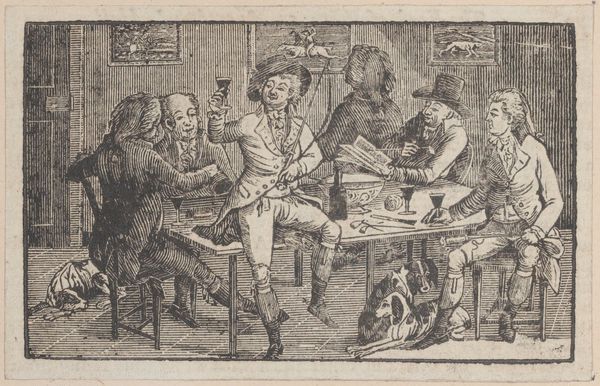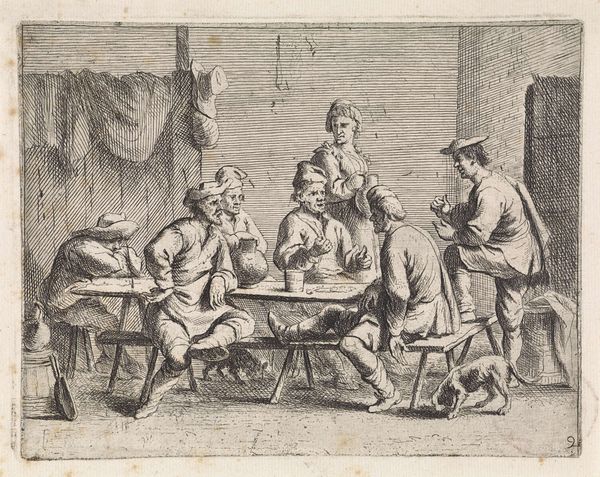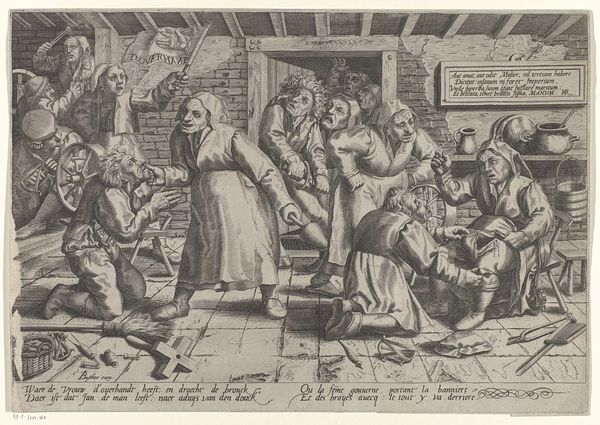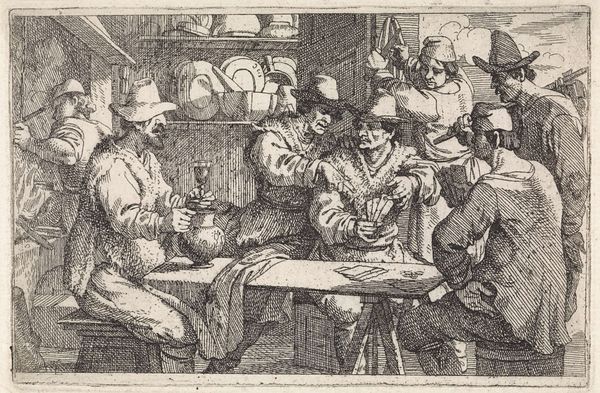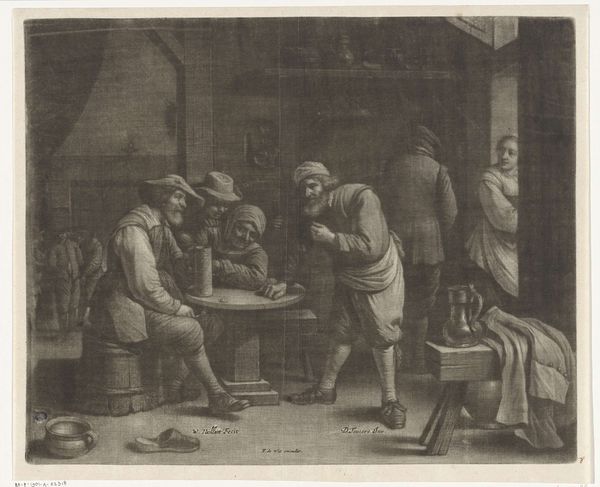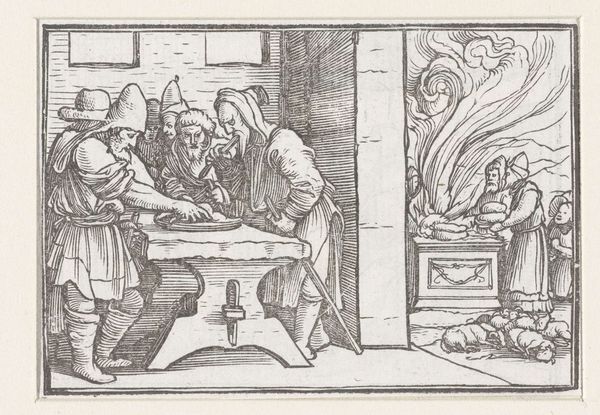
#
mechanical pen drawing
#
pen illustration
#
pen sketch
#
pencil sketch
#
personal sketchbook
#
sketchwork
#
pen-ink sketch
#
pen work
#
sketchbook drawing
#
sketchbook art
Dimensions: height 87 mm, width 129 mm
Copyright: Rijks Museum: Open Domain
Editor: This is "De dorpschirurgijn" by Jan Baptist de Wael, made sometime between 1642 and 1669. It's a pen drawing with incredibly fine lines. I find it quite humorous, especially the patient's pained expression! What do you see in this piece? Curator: It’s fascinating how seemingly simple images capture deep cultural anxieties. Notice the "surgeon" with his spectacles; consider how that visual cue signals a very particular kind of… questionable expertise. Doesn’t it strike you as satirical? Editor: Absolutely! He looks more like a charlatan than a healer. So the spectacles, more than just aiding sight, become a symbol of… deceit? Curator: Precisely. Think about the symbols used in earlier eras, the heavy, meaningful choices. Now, look at this image—it plays with our established visual vocabulary to subtly critique emerging professions. Note also the tools hanging above; they signify not competence, but perhaps, quite the opposite? What sort of narrative do they convey to you? Editor: I see! The tools, combined with the surgeon's appearance, suggest a kind of theatrical performance of medicine rather than genuine care. There's the suffering patient, a woman holding two children, a dog sitting at the patient's feet, as well as onlooking townsfolk; everyone is a part of the comedy. Curator: And within this comedy is embedded a real social commentary, about trust, appearance, and the anxieties of a changing world. Does knowing that shift your perception? Editor: It does. I initially saw only humor, but understanding the symbolism unlocks layers of meaning, making the artwork so much more powerful. Curator: Indeed, and understanding symbolism is seeing across time itself.
Comments
No comments
Be the first to comment and join the conversation on the ultimate creative platform.

